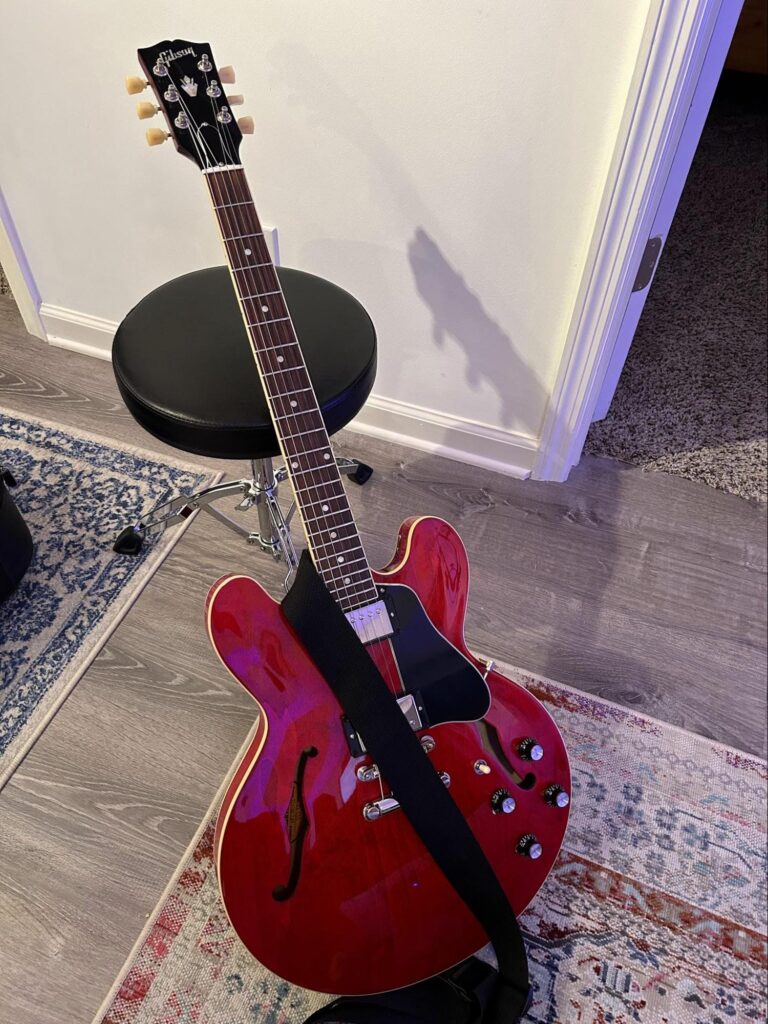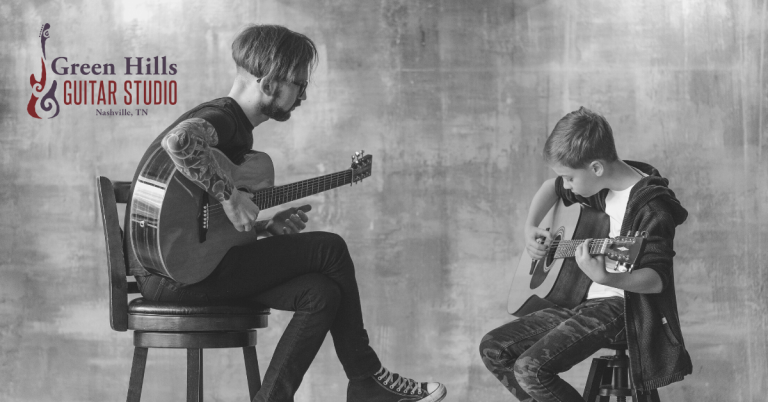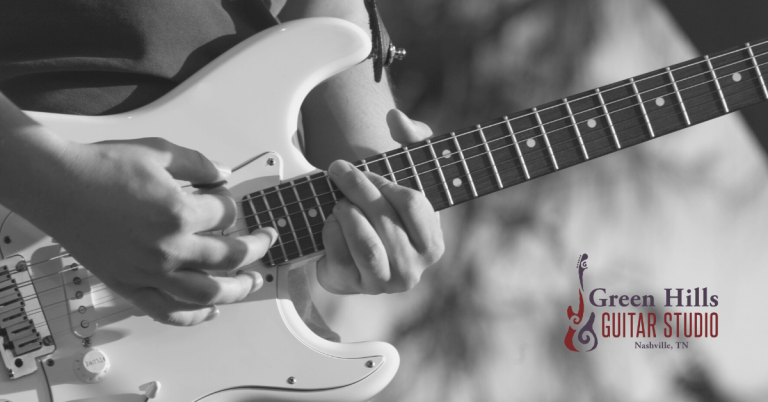Essential Guitar Accessories for Beginners: What You Need To Get Started
Are you a beginning guitarist taking your first steps into the world of the 6-string? If so, you’ve likely encountered a daunting array of guitar accessories touted as “must-haves.” It’s easy to feel lost amid the abundance of recommendations.
Friends may suggest an arsenal of gear, online forums can be overwhelming, and the allure of shiny gadgets can be irresistible.
But fret not (pun intended), for in this guide, we will strip away the confusion and cut straight to the essentials. As a beginner, we understand that your focus should be on nurturing your musical passion, not deciphering a complex shopping list.
In this article, we will cater to you—the aspiring guitarist—with a comprehensive exploration of the fundamental guitar accessories that are indispensable at the onset of your journey.
Guitar Accessories 101
Guitar accessories encompass an array of tools and gear designed to enhance your guitar-playing experience. While the guitar is the heart of your musical journey, these accessories are the supportive backbone, enriching your sound, comfort, and maintenance.
These accessories play multifaceted roles in your musical endeavors. Tuners, for instance, ensure that your guitar is in perfect harmony, while picks allow you to articulate your unique sound.
Straps provide comfort during extended playing sessions, and cases safeguard your cherished instrument. Capos open new avenues of creative expression, and string winders and cutters simplify maintenance tasks.
These tools collectively ensure that your guitar sounds its best, remains comfortable to play, and stands the test of time. For beginners, these accessories are not mere add-ons but essential companions. They demystify the initial challenges of tuning, strumming, and chord changes.
They make learning more enjoyable and less frustrating, fostering your growth as a guitarist. As you grow as a musician, remember that these accessories are your allies, here to support you every step of the way.
Choosing Your First Guitar
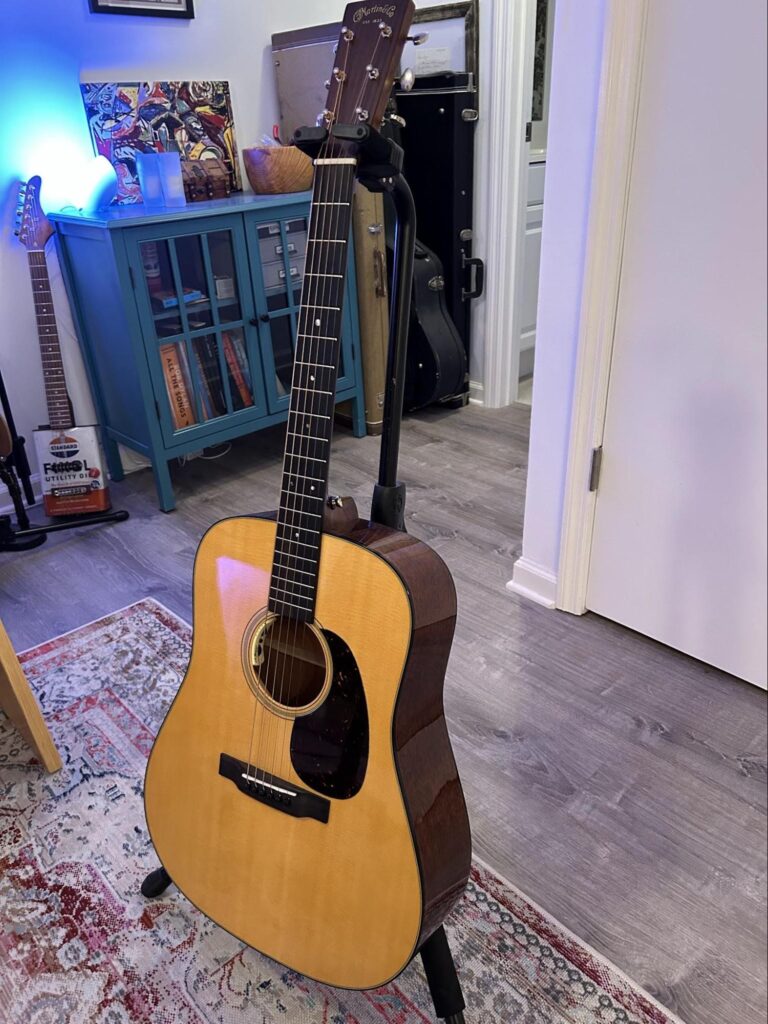
The first step may seem straightforward when embarking on your guitar journey: “I want to buy a guitar.” However, as you step into the world of stringed instruments, the choices can quickly become overwhelming.
Acoustic or electric? Different shapes, sizes, and features? It’s a labyrinth of options, and you’re right to seek guidance.
Before diving into pickups, preamps, and flashy designs, consider the wisdom of simplicity for your first guitar. I recommend starting with an acoustic guitar. It’s the elemental, stripped-down version of this beloved instrument.
Why?
Because an acoustic guitar offers a pure and unadulterated connection between you and your music, its lack of distractions keeps your focus squarely where it should be – on the music you’re creating.
Sure, personal taste matters. Find a guitar that resonates with your aesthetic preferences and looks and feels right to you. But when you peel away the layers, there’s nothing quite like the bare-bones simplicity of an acoustic guitar. It allows you to forge a deep connection with the instrument, fostering your skills and passion for playing.
Finding “The One”: The Importance of Feel and Sound
So, you’ve spotted the acoustic guitar of your dreams. Now, how does it feel in your hands? Are the strings so high above the fretboard that chords are challenging to play? Does the guitar fit comfortably on your lap, or does it seem too unwieldy or petite? Does it produce a rich, satisfying sound and maintain its intonation?
These are the essential factors to consider before making your purchase. It’s not just about aesthetics; it’s about your tactile and auditory connection with the instrument. Take your time in this phase of your guitar journey.
Play as many different guitars as you can get your hands on. Sometimes, the right guitar chooses you, resonating with your touch and musical aspirations.
Remember, your first guitar is the foundation upon which your musical odyssey is built. Choosing wisely ensures that your guitar is not just an instrument but a trusted companion on your journey toward becoming a skilled guitarist.
Must-Have Guitar Accessories for Beginners
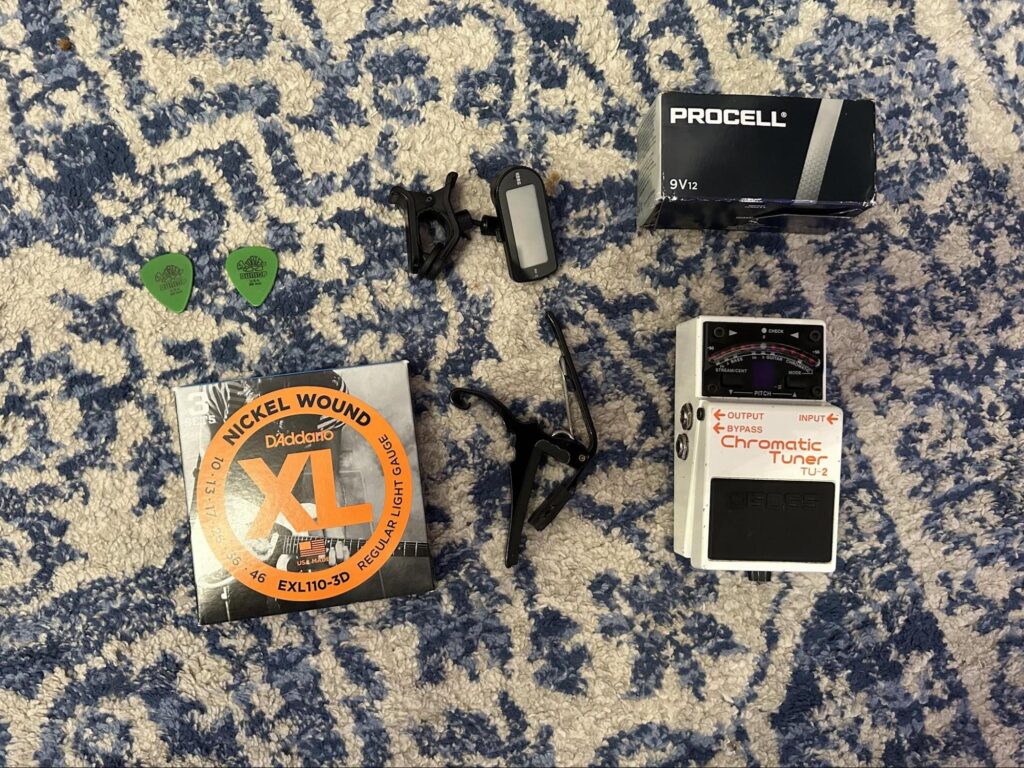
As a novice guitarist, stepping into the world of music may seem daunting, but with the right gear, your journey becomes more accessible and enjoyable. This section will delve into the must-have guitar accessories for beginners, each playing a crucial role in your musical evolution.
A. Tuner and Tuning Tips
Importance of Proper Tuning: Imagine trying to write a beautiful story with a pen that keeps running out of ink. Likewise, playing an untuned guitar can hinder your musical expression. A tuner is your inkwell, ensuring that every note rings true. It lays the foundation for your music and helps develop your ear for pitch.
Types of Guitar Tuners: There are various tuner options, including clip-on tuners that attach to your headstock, pedal tuners that sit on the floor, and smartphone apps that utilize your phone’s microphone. Choose the one that suits your preferences and budget.
Basic Tuning Instructions for Beginners: Learning to tune can be intimidating, but it’s an essential skill. Start with standard tuning (E A D G B E) and use your tuner to match each string’s pitch. Practice tuning regularly to develop your ear and muscle memory.
B. Guitar Picks
Different Types of Guitar Picks: Picks come in various thicknesses and materials, each producing a unique tone. Thin picks provide flexibility and brighter tones, while thick picks offer stability and warmer tones. Experiment with different picks to find the one that complements your playing style.
How to Choose the Right Pick: Consider your musical genre and playing technique when selecting a pick. Lighter picks are ideal for strumming, while heavier picks are better for precise picking and soloing. Ultimately, your pick choice should feel comfortable and responsive.
Tips for Holding and Using Picks: Proper pick handling is vital for precision and control. Hold the pick between your thumb and index finger, allowing a small portion to protrude. Experiment with angles and pressure to achieve your desired sound, and be bold and adapt your technique as you progress.
C. Guitar Strap
Importance of a Comfortable and Adjustable Strap: A comfortable and adjustable strap is necessary if you plan to play standing up. It ensures your guitar remains secure and at the correct playing height, reducing strain during extended sessions.
Proper Positioning for Playing Standing Up: Adjust your strap to a length that allows your guitar to rest comfortably against your body. Experiment with strap lengths until you find a position that feels natural and provides easy access to the fretboard.
D. Guitar Case or Gig Bag
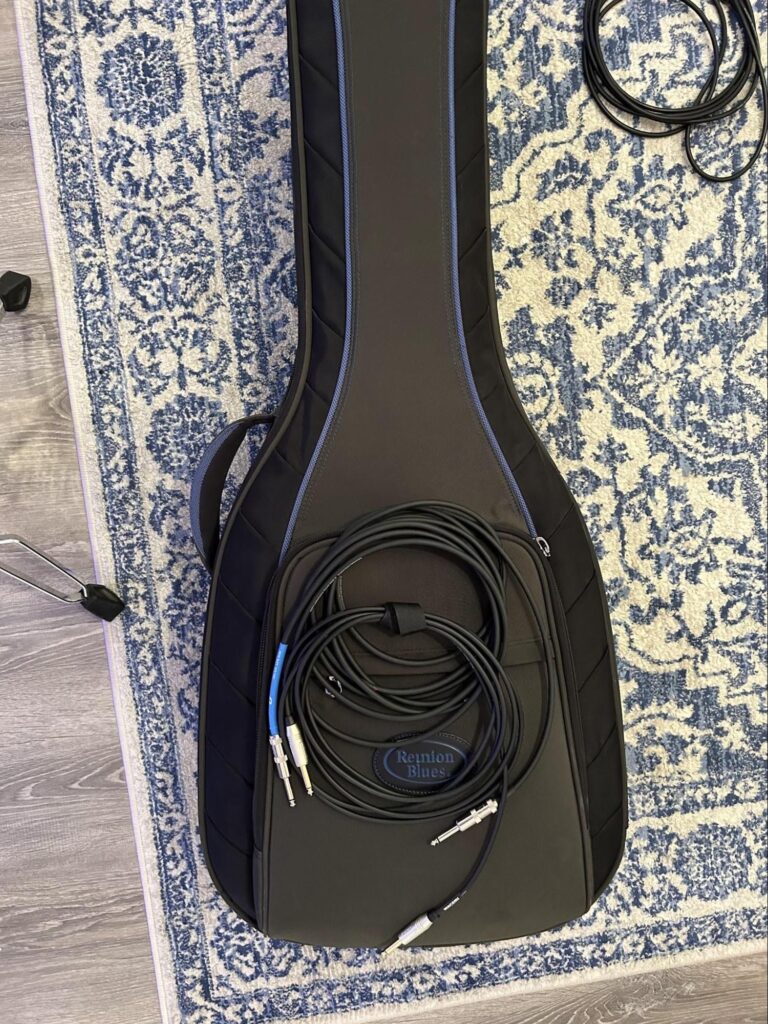
Protecting Your Guitar During Transport: Your guitar is a precious investment, and a proper case or gig bag is its shield against the outside world. Whether heading to lessons, a jam session, or a gig, this accessory protects your instrument from bumps, scratches, and environmental factors.
Features to Look for in a Case or Gig Bag: When choosing a case or gig bag, consider factors such as size (for a snug fit), padding, and the number of compartments for accessories. A hard case provides maximum protection, while a gig bag offers portability.
E. Capo
Explanation of What a Capo Does: A capo is a handy accessory. It’s like a movable nut for your guitar. Placing it on different frets changes the pitch of your open strings, allowing you to play in other keys without altering your chord shapes.
How to Use a Capo Effectively: To use a capo, simply clamp it onto the desired fret and adjust it until it’s secure. Experiment with capo placement to discover new sounds and play songs that suit your vocal range.
F. String Winder and Cutter
Simplifying the String-Changing Process: String changes are routine in guitar maintenance. A string winder and cutter combo makes this task quicker and more efficient, ensuring your guitar always sounds its best.
How to Use a String Winder and Cutter: Fit the winder onto the tuning peg and turn it to wind or unwind strings. When it’s time to change strings, use the built-in cutter to trim excess string length. This tool eliminates frustration and potential damage during the string-changing process.
Safety Precautions When Changing Strings: Emphasize safety when changing strings. Encourage beginners to be cautious when unwinding old strings, as they can snap under tension. Always dispose of old strings safely to avoid accidents.
Optional Guitar Accessories for Beginners
As you dive deeper into your guitar journey, certain optional accessories can elevate your playing experience. While these items aren’t as fundamental as the must-haves, they can add significant value to your practice and performance. Let’s explore some of these optional guitar accessories for beginners.
A. Metronome
Benefits of Practicing with a Metronome: A metronome is a valuable tool for developing your sense of timing and rhythm. It helps you maintain a steady tempo while practicing, improving your overall musical precision and ability to play in time with other musicians. Additionally, it’s a fantastic tool for honing your speed and accuracy.
Recommended Metronome Apps and Devices: In the digital age, various metronome apps are available for smartphones and tablets, making it easy to practice with a metronome on the go. Alternatively, you can invest in standalone metronome devices with advanced features for more nuanced practice sessions.
B. Guitar Stand
Keeping Your Guitar Safe and Accessible: While having a case or gig bag for transporting your guitar is essential, a guitar stand is a handy accessory for keeping your instrument accessible at home. It allows you to display your guitar proudly while making it readily available for practice, encouraging you to play more often.
Types of Guitar Stands: Guitar stands come in various designs, including floor stands and wall hangers. Floor stands are versatile and suitable for most spaces, while wall hangers save floor space and provide an attractive display option. Choose the one that best fits your needs and space constraints.
C. Finger Picks and Thumb Picks
When and Why to Use Finger and Thumb Picks: Finger and thumb picks are optional accessories that enhance your fingerstyle playing. They provide a crisper, more pronounced sound, making them particularly useful for folk, bluegrass, and classical guitar styles. Consider using them to add a distinct flavor to your playing.
Proper Usage and Fitting: To use finger and thumb picks effectively, ensure they fit comfortably on your fingers. Experiment with different sizes and materials to find the ones that suit your playing style. Practice with them regularly to develop control and dexterity, and gradually incorporate them into your playing repertoire.
Guitar Amps, Etc.
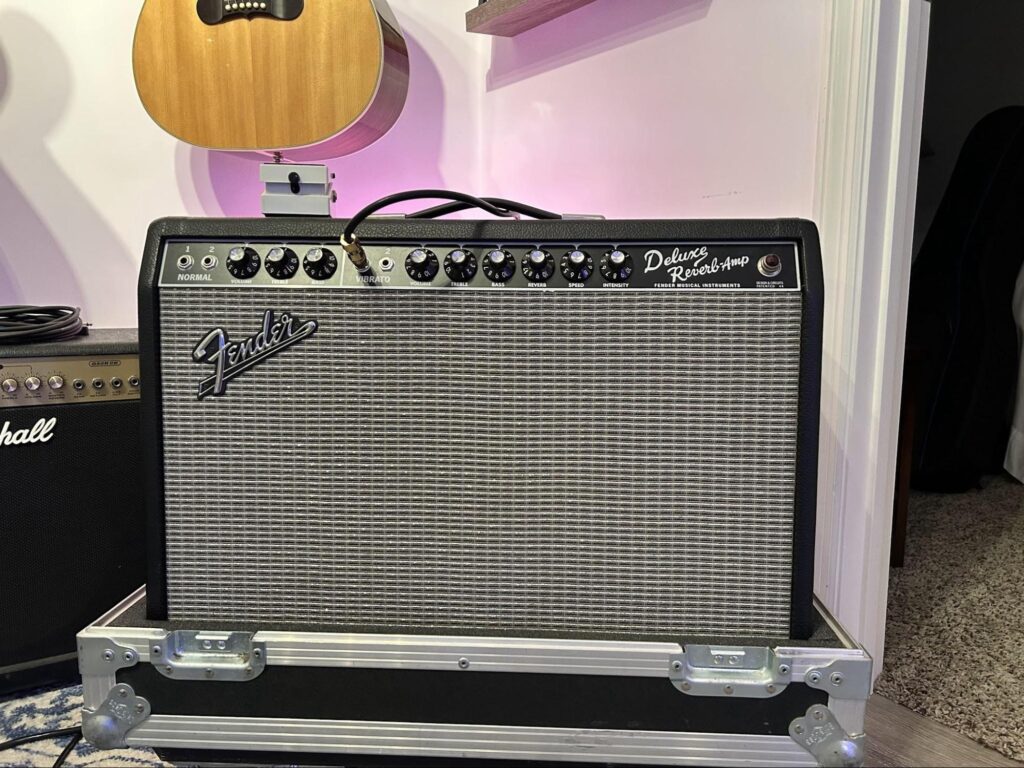
I know I’m not going to convince everyone to get an acoustic guitar first, so this section is for all of you who ended up getting an electric guitar.
AMPS, AMPS, AMPS…
This is another universe of choices you’ll have to make. Some amps sound good with certain guitars, and amps that sound pretty terrible with different amps. There’s also quite the price range when purchasing.
I have stayed with the tried and true brands of the past fifty-plus years. Amps made by Fender, Mesa Boogie, Marshall, and VOX. Nothing too big or loud, either. I stay around 30 watts and rarely need to go louder.
30 watts is loud, FYI! Real LOUD!
I also like having an onboard reverb effect. It helps give me a little more of a room feel if I’m playing in a very dead and dense-sounding room. Other than that, the fewer knobs, the better!
Make sure to get yourself a suitable and durable cable or two. Nothing can be more frustrating and even off-putting than a broken cable making the sound go in and out or distorted.
And as far as guitar pedals are concerned, have fun. Try them all. Find one that inspires you. All choices are correct. It just depends on what sounds you are going for.
For example, if you like Metallica, you want to get a distortion pedal. If you like U2, you’ll want to get a delay pedal. Van Halen? Maybe a flanger pedal.
It’s up to you.
The Coda
We’ve explored a range of essential and optional guitar accessories that can elevate your beginner experience. From tuners to capos, straps to stands, these tools are not mere add-ons but your trusted companions on your musical voyage.
So, whether you’re strumming the strings of an acoustic or exploring the realms of an electric, remember that these accessories are your allies, guiding you toward musical excellence. Embrace them with open arms, and your guitar journey will flourish.
At Green Hills Guitar Studio, we support your musical aspirations. If you’re ready to take the next step and dive deeper into the world of guitar playing, contact us today for expert guidance and transformative guitar lessons. Your musical adventure awaits – seize it with confidence!
